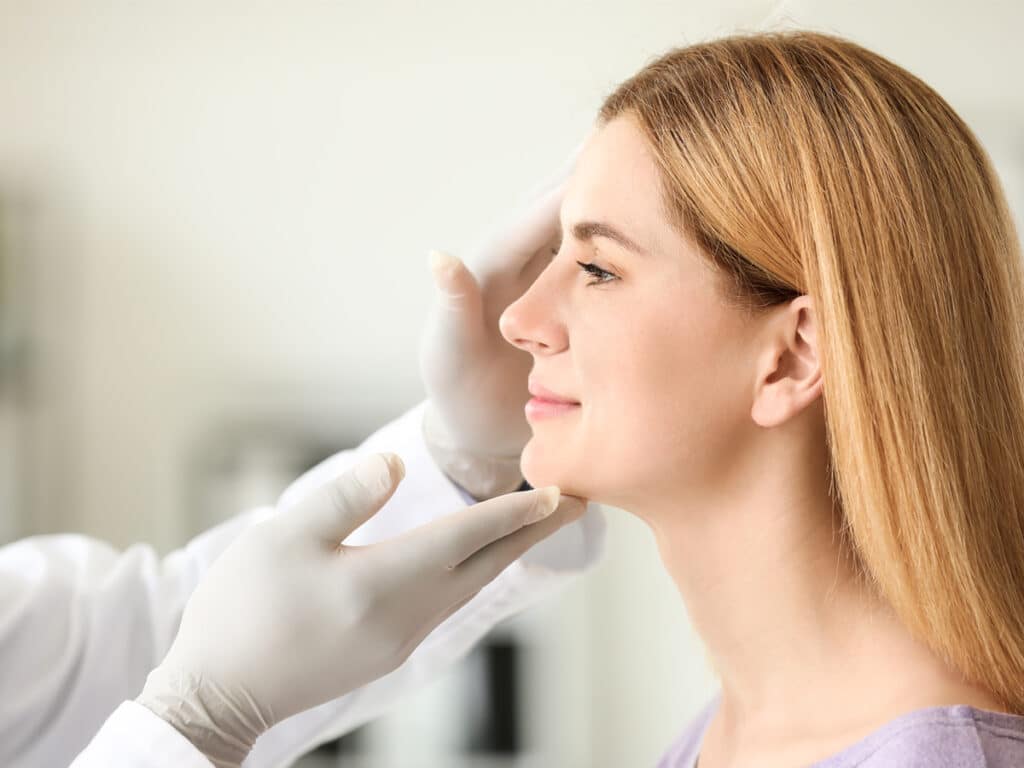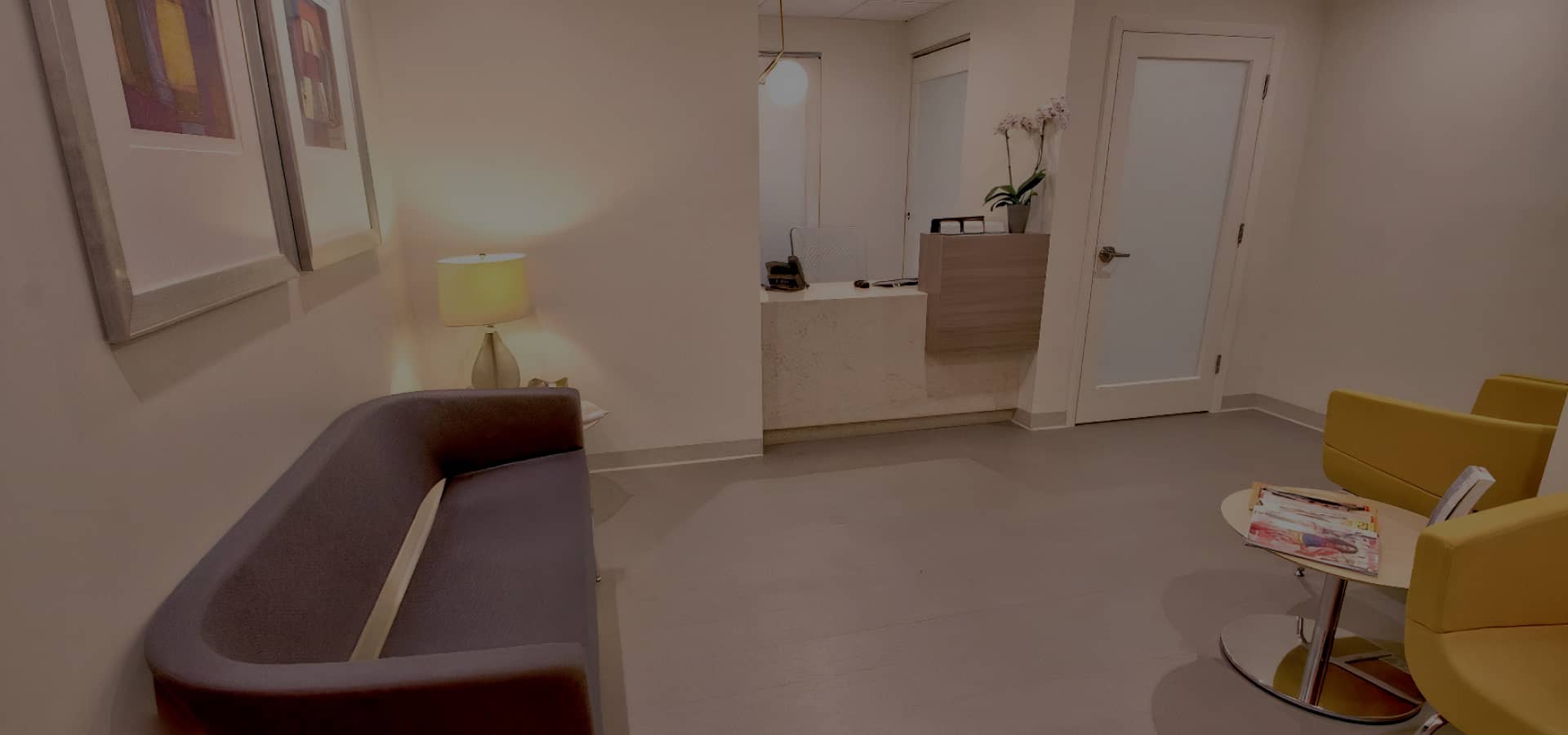Secondary rhinoplasty, also known as revision rhinoplasty, is a corrective surgical procedure that follows an initial rhinoplasty to improve results. This surgery can be performed for various reasons, including cosmetic enhancement or functional improvement of the nose. Due to the complex nature of the nose and the need to preserve its function, secondary rhinoplasty is considered more challenging than primary rhinoplasty.
The revision rhinoplasty process may involve complex reconstruction techniques to address these functional issues and restore normal anatomy while maintaining the cosmetic appearance of the nose. the recovery process.
Navigating Revision Rhinoplasty
Secondary rhinoplasty, also known as revision rhinoplasty, is a complex and multifaceted surgical procedure that necessitates a profound understanding of both the aesthetic and functional aspects of the nose. To provide readers with a comprehensive understanding, let’s delve into specific scenarios where revision rhinoplasty may be necessary:
1. Persistent Breathing Problems: A pivotal facet of revision rhinoplasty involves addressing persistent breathing issues. When primary rhinoplasty fails to ameliorate or exacerbates nasal airflow problems, it becomes a clear indication for revision. Offering detailed explanations of conditions such as nasal valve collapse, septal deviations, or turbinate hypertrophy, along with an exploration of how these issues affect breathing, can provide invaluable insights for readers.
2. Undesired Aesthetic Results: Revision rhinoplasty frequently entails the correction of aesthetic concerns that were inadequately resolved in the initial surgery. Delve into the discussion of common aesthetic issues like asymmetry, irregularities, or unsatisfactory tip shape. Elucidate how revision procedures can effectively rectify these problems, and consider the inclusion of visual examples if feasible to enhance comprehension.
3. Functional Issues: Occasionally, functional issues like saddle nose deformity or tip ptosis may manifest after the initial rhinoplasty. It is imperative to provide a comprehensive breakdown of these functional problems, elucidating their underlying causes and detailing how revision surgery can effectively restore nasal function.
4. Complications and Risks: In addition to outlining potential scenarios, it is crucial to address the complications and risks that are inherently associated with revision rhinoplasty. This should encompass a thorough discussion of issues such as tissue scarring, grafting techniques, and the paramount importance of selecting a highly skilled and experienced surgeon who can navigate the intricacies of revision procedures with precision and care.
Reasons for Seeking Revision Rhinoplasty
Patients may choose to undergo secondary rhinoplasty for a variety of reasons. Common problems that may require revision surgery include nasal airway obstruction, cartilage or nasal bone collapse, artificial cosmetic appearance, internal and external nasal valve collapse, worsened asymmetry, over or inadequate reduction of dorsal height, incomplete shaping, excessive or inadequate tip projection, and an excessively narrowed nasal tip. It is essential to understand the specific issues that need to be addressed before deciding on secondary rhinoplasty.
Previous Surgery Considerations
Before undergoing secondary rhinoplasty, it is crucial to consider the previous surgery and its outcomes. This will help determine the best approach for the revision procedure.
Previous Procedures and Techniques Used
The techniques and procedures used in the initial rhinoplasty can impact the approach to secondary rhinoplasty. For example, if the primary nasal surgery involved the use of artificial materials, these may need to be removed or replaced during the revision procedure. In addition, the amount of scar tissue present from the previous surgery can also influence the surgical approach.
Time Between Surgeries
It is generally recommended to wait at least one year after the initial rhinoplasty before considering secondary rhinoplasty. This allows for the nose to fully heal and for any swelling to subside, providing a clearer picture of the final results. However, in some cases, it may be necessary to wait even longer before undergoing revision surgery.
Preparation for a Secondary Rhinoplasty
A thorough preparation is essential for a successful secondary rhinoplasty procedure. This involves selecting a highly experienced revision rhinoplasty surgeon, attending an initial consultation to assess your nasal framework, and comprehending the risks and potential complications associated with the surgery.
By carefully preparing for a secondary rhinoplasty procedure, candidates for revision rhinoplasty Miami can increase their chances of achieving a successful outcome, improved nasal function, and an aesthetically pleasing appearance.
Finding an Experienced Surgeon for Revision Rhinoplasty
To guarantee the best possible outcome, it is crucial to choose a board-certified facial plastic surgeon who has extensive experience in rhinoplasty, specifically revision procedures. This ensures that the prospective surgeon is proficient in addressing the complexities of the nose and can deliver the most satisfactory results for revision rhinoplasty patients.

Initial Consultation and Examining Your Nasal Structure
During the initial revision rhinoplasty consultation, the surgeon will carefully examine your nasal anatomy and discuss your concerns and desired outcomes. The goal of this evaluation is to identify the best method for the secondary rhinoplasty surgery, establish practical expectations for the result of the Miami rhinoplasty revision, and provide a cost estimate.
Understanding the Risks and Potential Complications of the Procedure
Like all plastic surgery procedures, secondary rhinoplasty carries its own set of risks and possible complications. These may include infection, bleeding, anesthesia complications, or an unsatisfactory cosmetic appearance. It is essential to discuss these risks with your revision rhinoplasty surgeon and understand the precautions taken to minimize them during the revision rhinoplasty process. In addition, it’s vital to consider the recovery time and any post-operative care required, such as managing scar tissue and nasal congestion.
Surgical Procedure & Techniques Used in Revision Rhinoplasty
Secondary rhinoplasty procedures can be more complex than primary rhinoplasty due to factors such as scar tissue, the need for additional cartilage, and patient dissatisfaction. The specific revision rhinoplasty technique used by the surgeon will vary based on the patient’s individual anatomy and the issues that need to be addressed.
Primary Versus Secondary Rhinoplasty
Primary rhinoplasty is a surgical procedure that focuses on reshaping the nose for the first time, addressing issues such as an asymmetrical nose, crooked nose, or nasal obstruction. In contrast, secondary rhinoplasty, also known as revision rhinoplasty aims to correct or improve upon the results of a previous rhinoplasty procedure. Candidates for revision rhinoplasty surgery may seek this procedure due to dissatisfaction with the outcome of the initial rhinoplasty or to address functional issues that have arisen since the original nose surgery. The revision rhinoplasty process often requires a more intricate and delicate approach to preserve nasal function, maintain the integrity of nasal structures, and achieve the desired cosmetic appearance.
Cartilage Grafts and Other Nasal Structural Repairs
In some cases, cartilage grafts may be necessary during a revision rhinoplasty procedure to provide additional support for the nasal skeleton and address issues with the nose shape or deformities resulting from the initial rhinoplasty procedure. The cartilage can be harvested from the patient’s own body, such as the septal cartilage, ear cartilage, or rib cartilage. Autogenous cartilage grafts can help improve the nasal shape, correct deformities, and enhance the overall appearance of the nose. In addition to cartilage grafts, other nasal structural repairs may be needed, such as adjusting the position of the nasal bones or addressing issues with the lateral cartilages.
Scar Tissue Removal and Airway Reconstruction
Scar tissue from the previous rhinoplasty surgery can impact the appearance and function of the nose. During a secondary rhinoplasty procedure, the revision rhinoplasty surgeon may remove or reposition scar tissue to improve the nasal airway, reduce the appearance of scars, and achieve a more natural appearance. Airway reconstruction may also be necessary to address breathing difficulties or obstructions caused by the initial rhinoplasty, such as nasal valve collapse or chronic nasal congestion. The revision rhinoplasty process may involve complex reconstruction techniques to address these functional issues and restore normal anatomy while maintaining the cosmetic appearance of the nose.
Is Scar Tissue a Common Issue That Requires Revision Rhinoplasty?
Revision rhinoplasty scar tissue management can be necessary in certain cases where scar tissue formation becomes a common issue post-surgery. Scar tissue can lead to functional and aesthetic concerns, affecting the overall outcome of the initial rhinoplasty. Managing scar tissue through revision procedures can help achieve better results and restore the desired nasal shape for the patient.
Post-operative Care for Secondary Rhinoplasty
Following a Miami revision rhinoplasty, the success of the outcome can heavily depend on post-operative care. This includes following the surgeon’s instructions for wound care, managing swelling and discomfort, and attending follow-up appointments.

Managing Swelling and Discomfort
Swelling and discomfort are common after a secondary rhinoplasty, but they can be managed with the help of medications prescribed by the surgeon. Cold compresses and keeping the head elevated can also help reduce swelling. It is essential to avoid strenuous activities and follow the surgeon’s recommendations for a smooth recovery process.
The Complex Dynamics of Revision Rhinoplasty: Navigating Outcomes and Expectations
Revision rhinoplasty is an intricate and highly individualized procedure. While the goal is to achieve the desired results in one surgery, it’s essential to recognize the inherent unpredictability of the process. Here, we delve into the factors that contribute to the unpredictability and the possibility of requiring multiple revision surgeries:
- Unique Anatomy and Healing: Every patient has unique nasal anatomy and healing responses. This means that the outcome of each revision rhinoplasty can vary significantly. Some individuals may experience smoother recoveries and achieve their desired results after one surgery, while others may require additional revisions to address evolving issues.
- Complexity of Revision: Revision rhinoplasty is often more complex than primary rhinoplasty. The presence of scar tissue, altered nasal structures, and previous surgical changes can make achieving the desired outcome more challenging. As a result, revisions may be necessary to refine the results over time.
- Patient Expectations: Patient expectations play a significant role in the perception of success. While surgeons strive to meet patient goals, it’s essential to recognize that achieving “perfection” in nasal aesthetics can be subjective. Sometimes, patients may seek further refinements or have evolving aesthetic preferences.
- Healing and Maturation: The final results of a rhinoplasty can take months to fully manifest. During this time, changes in swelling, tissue settling, and scarring can occur. This means that what may appear as a less-than-ideal outcome immediately after surgery may improve with time, obviating the need for further revisions.
- Communication with Your Surgeon: Open and honest communication with your surgeon is key. If you are dissatisfied with the results or if issues arise after revision rhinoplasty, discussing your concerns with your surgeon is crucial. They can provide guidance on whether additional revisions are necessary and how to proceed.
Exploring the Potential Complications and Risks of Revision Rhinoplasty
Revision rhinoplasty is a complex surgical procedure that comes with its own set of potential complications and risks. Understanding these challenges is essential for anyone considering this surgical journey. Here, we’ll delve into the intricacies of complications and risks associated with revision rhinoplasty:
Swelling and Bruising: After surgery, it’s common to experience swelling and bruising, which can persist for some time. This is a normal part of the healing process and typically resolves gradually.
Infection Risk: Like any surgical procedure, revision rhinoplasty carries a risk of infection. Surgeons take strict precautions to minimize this risk, including sterilization and antibiotic treatments.
Anesthesia Complications: Anesthesia is used during the procedure, and while it is generally safe, there is always a small risk of complications. Your anesthesiologist will assess your medical history to minimize these risks.
Scarring: Revision rhinoplasty may involve incisions, which can lead to scarring. Skilled surgeons take care to minimize visible scarring, often placing incisions inside the nose or in inconspicuous locations.
Functional Issues: Depending on the extent of the revision, there is a risk of functional issues like breathing difficulties. Surgeons with expertise in revision rhinoplasty take steps to preserve or improve nasal function.
Unpredictable Outcomes: Rhinoplasty is an art as much as it is a science, and sometimes outcomes can be unpredictable. Even with the most experienced surgeon, there may be cases where achieving the desired result is challenging.
Attending Follow-up Appointments
Regular follow-up appointments with the surgeon are crucial to monitor the healing process and address any concerns or complications that may arise. These appointments allow the surgeon to assess the progress and make any necessary adjustments to ensure the best possible outcome.
Consult With a Secondary Rhinoplasty Expert
Secondary rhinoplasty is a complex procedure that requires careful consideration, preparation, and the expertise of an experienced surgeon like Dr. Anthony Bared in Miami, FL. By understanding the reasons for seeking revision surgery, considering previous surgical factors, and following proper post-operative care, patients can expect a successful outcome and improved nasal appearance and function. To discuss your needs and goals with a secondary rhinoplasty expert, please call (305) 359-7299 or click here to schedule your consultation online.

